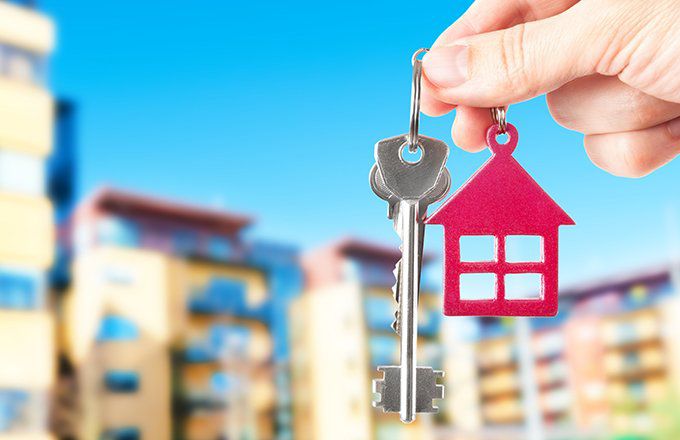[ad_1]
Landlords renting out a residential property (house, vacation cottage, apartment) for the first time may assume that their homeowners insurance will cover all the costs in the case of a natural disaster, accident or other damaging events. That’s a rookie mistake.
Key Takeaways
- Homeowners insurance will not cover a dwelling that is not occupied by its owner, which is why you need landlord insurance.
- Core coverages of landlord insurance are property damage, rental income lost due to a property’s temporary inhabitability, and liability protection.
- Additional riders can be purchased for coverage for income lost when a tenant misses a rent payment, flood damage, expenses incurred when having to bring a building up to code after damage has been done to it, and more.
Why You Need Landlord Insurance
Chances are that your policy only covers owner-occupied homes. If you start renting out to someone else, the coverage no longer applies. And as renters are generally not held liable when a large appliance malfunctions, a person suffers an injury on the property (through no fault of the tenant), a forest fire damages or destroys your home, or burglars simply empty the place, that means you could be left out to dry for these or other misfortunes caused by humans or Mother Nature.
This is where landlord insurance comes in. These policies come in all shapes and sizes. Before you begin price shopping, consider what you need to specifically address and protect against in your rental property.
What Does Landlord Insurance Cover?
A good, comprehensive landlord insurance policy will have three core protections:
- Property Damage—This is coverage in the event that the real estate or furnishings suffer from a natural disaster, fire, electric/gas malfunction, earthquake, vandalism, or irresponsible tenants. If possible, try to get a policy that offers replacement cost instead of the actual cash value (especially if fixtures and furnishings are old) or a predetermined lump sum of cash.
- Lost Rental Income/Rental Default Insurance —Should something cause your property to be totally uninhabitable (severe mold, termites, a rat infestation, or a sinkhole), this feature provides temporary rental reimbursement to cover the rent money you’d otherwise receive if tenants could be occupying the property.
- Liability Protection—This is coverage for the medical or legal costs that might ensue if the tenant or a visitor suffers injury due to a property maintenance issue (such as icy walkways, architectural collapse, or an out-of-control hive of bees).
You might also see underwriters refer to different packages as DP-1, DP-2, or DP-3 (DP stands for “dwelling property”). Each of these refers to varying levels of coverage, with DP-1 being the most basic, and DP-3 representing the most comprehensive.
Additional Coverage
There are several common riders that can come with landlord insurance policies. They’re not as vital as the key provisions mentioned above, but they could come in handy and save you some money in the long run.
- Guaranteed Income Insurance—This covers the landlord if a tenant comes up short on the rent one month (or doesn’t pay at all).
- Flood Insurance—As many landlord insurance policies don’t include flood damage related to natural disasters or municipal plumbing, this coverage is worth adding if the property is in a flood-prone zone.
- Emergency Coverage—In the event a tenant calls you out to fix something such as a leaking dishwasher or was accidentally locked out of the house, this feature can help cover some or all of the costs you incurred to travel to the property and resolve the issue.
- Additional Construction Expenses—This will cover expenses incurred by having to bring a building up to code after it has been damaged.
15%
The amount by which landlord insurance is generally more expensive than homeowners insurance.
How Much Does Landlord Insurance Cost?
According to a 2021 report from the National Association of Insurance Commissioners (NAIC), the average cost of homeowners insurance was $1,249, though prices can vary significantly by state. However, as rental properties are more prone to damage and incident, you can expect to pay about 15% more for landlord insurance on the same property, according to the free real estate investment tracking site Stessa.com.
There is also an inverse relationship between the price of your premiums and the length of time the property is in service. For example, according to Houselogic.com, an informational website run by members of the National Association of Realtors, expect to pay nearly double in annual premiums if you rent out your home for only 12 weeks instead of an entire year. The reasoning is that short-term tenants are less likely to notice (or even mention) maintenance issues. They might be more careless, or they may not understand the layout of the house and the location of the plumbing, load-bearing supports, or electrical wiring. All this can increase the probability of problems and the insurer’s risk.
When shopping for policies, be sure to ask your homeowners insurance provider about bundle options. If you sign up for homeowners and landlord insurance through the same company, you may receive a discount.
Landlord insurance does not cover a renter’s belongings, so it’s wise to counsel your renter to look into getting renter’s insurance.
The Bottom Line
Before you decide to rent out a piece of property, take a look at your homeowners insurance policy. Don’t assume it will cover damages and liabilities while you’re not living there. If you want to protect your home and rent it out as well, landlord insurance is a must.
You might also want to suggest that your tenants take out a renter’s insurance policy, so that their own personal effects will have coverage in the event of an accident.
[ad_2]
Image and article originally from www.investopedia.com. Read the original article here.

